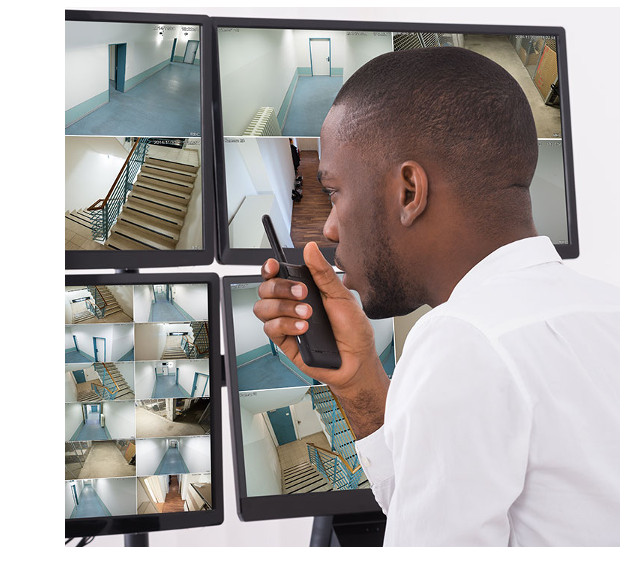Introduction
 Organisations should consider using searches of their premises for emplaced threats (such as explosive and incendiary devices, or electronic devices posing an espionage risk) as a tool complementing other protective security measures. Searches may form part of routine guardforce patrol activity, offering preventative and deterrent benefits, and/or may be conducted in response to a particular threat (e.g. a breach in perimeter security, or a telephoned warning).
Organisations should consider using searches of their premises for emplaced threats (such as explosive and incendiary devices, or electronic devices posing an espionage risk) as a tool complementing other protective security measures. Searches may form part of routine guardforce patrol activity, offering preventative and deterrent benefits, and/or may be conducted in response to a particular threat (e.g. a breach in perimeter security, or a telephoned warning).
The regularity and scale of searches should reflect the threat and be proportionate to the risks faced by the particular organisation and site. For example, publicly accessible areas (e.g. entrance foyers, loading bays and car parks) are likely to warrant regular and thorough searches for emplaced threats, as may relevant public areas outside the site's perimeter and control (e.g. emergency assembly areas and the routes to them). In contrast, workspaces protected by a secure perimeter with carefully controlled access and screening of people on entry for carried threats may only require searching in response to an incident or alert. Frequent (at least daily) searches may be appropriate for higher risk sites/areas, and/or at times of heightened threat.
Ideally, the need to manage the risk of emplaced threats should be recognised as a key security requirement when designing, building, and fitting-out premises. Public areas should be designed so as to minimise opportunities for concealing items; unnecessary furniture should be avoided, for example bulky seating that items could be concealed under or behind, or waste-bins that threat items could be deposited in; similarly, alcoves, toilets, washrooms, storage cupboards, and service ducts (unless they can be kept locked) should all be avoided. Where public areas are designed and maintained with an open and uncluttered layout, the likelihood of people leaving items - whether accidentally or intentionally - is significantly reduced.
Effective searches are most easily conducted in organisations with good safety and security cultures, where work areas are kept tidy and items or behaviours that are suspicious are readily spotted and acted upon.
Planning and delivering effective premises searches
As for all security measures, premises searches should address a clearly articulated operational requirement reflecting the needs of the particular organisation and site. Note that different areas may have different search requirements (e.g. publicly accessible areas may warrant searching as part of "business-as-usual" guardforce patrols, whilst areas within a secure perimeter may only need searching in response to a breach of perimeter security).
Points to consider include:
- the rationale for searching (this should be informed by the threat to the organisation / site; vulnerable areas and assets; and risks to be mitigated);
- complementary security measures, for example ensuring that perimeter security is effectively maintained and that breaches would be promptly detected, and securing and tightly controlling access to rarely-frequented and difficult-to-search areas such as plant rooms and IT server rooms;
- what areas are to be searched (e.g. the main public and operational areas, as well as stairwells, fire escapes, corridors, toilets and lifts, and any car parks and surrounding grounds);
- what searches are intending to find (e.g. explosive or incendiary devices of at least a particular size; electronic devices posing an espionage risk);
- when and under what circumstances searches are to be conducted (e.g. daily, and/or in response to some form of security alert);
- the extent to which such activity is overt or discrete, balancing factors such as effectiveness, deterrence, risk of alarming visitors, and need to reassure them.
- governance of the search regime, including who is responsible for its management and coordination, what records are kept, and how its effectiveness is assured (e.g. through exercising and testing);
- who is responsible for conducting searches:
- routine searches may be undertaken most efficiently and effectively as part of "business-as-usual" guardforce patrols but should include an element of unpredictability (so patterns cannot be anticipated and exploited);
- non-routine searches may best be conducted by staff who work regularly in an area and so are best placed to spot unusual or suspicious items;
- for larger sites, responsibility should be divided into manageable areas;
- staff do not need to be experts in explosives or other devices; rather, they should be able to recognise any items that are out of place, as well as signs of suspicious activity;
- staff should ideally search in pairs (to ensure nothing is missed);
- how non-routine searches (e.g. those in response to a security alert) are to be initiated;
- actions to take on finding anything suspicious;
- Under no circumstances should a suspicious item found during a search be touched or moved in any way; the police should be informed immediately and they will ensure an appropriate response;
- what training is required to enable staff to conduct searches efficiently and effectively;
- review your search plan with your local police Counter Terrorism Security Adviser;
- test or exercise search capability periodically, reviewing performance and acting on lessons identified.
Evacuations - security and the role of searches
In addition to the threat from items emplaced within or in close proximity to a building or site, the organisation should also consider whether there is a risk of personnel being targeted at, or on their way to, any assembly point(s) used in the event of an evacuation. Where this is a concern, regular searches of assembly points and evacuation routes should be considered. Staff should be encouraged to be particularly vigilant during evacuations.
If there is any concern that perimeter security has been compromised, a full search of the premises should also be conducted prior to re-occupation by staff.